Hoya Krimson Queen and Krimson Princess are closely related. Each has only a few minor distinguishable characteristics that enable a grower to tell which is which. Therefore, they are constantly mixed up.
Today, I will cover Hoya Krimson Queen vs Princess debate in detail, so that you all can grab a better overview of the both, and decide which one to go for.
Luckily, the easiest way to establish a relationship between the 2 is by looking at the leaves and their colored markings. Funny enough, their colors and markings are almost identical, except one is almost an exact inversion to the other.
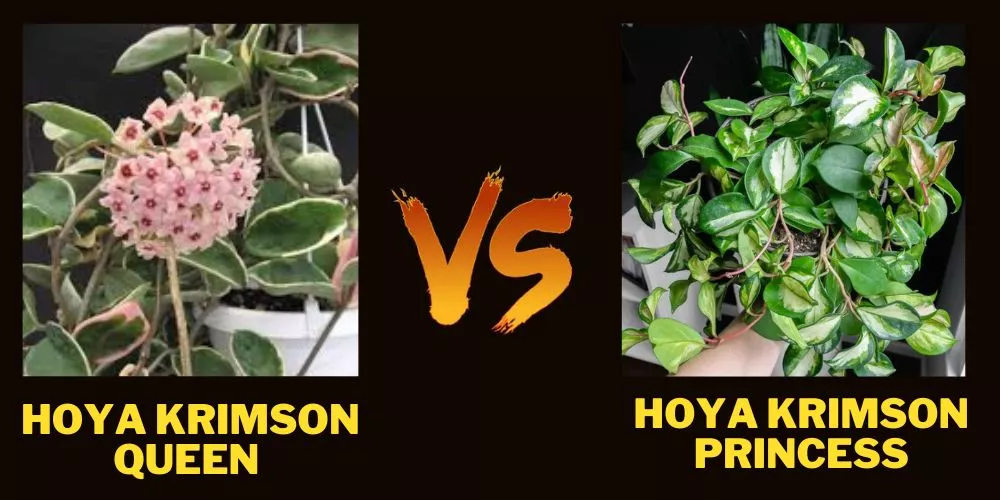
Easy peasy, right? Thankfully, this article on Hoya Krimson Queen vs Princess was carefully designed to help you become an expert in understanding the differences between the two.
Not only that, but we’ll go through many other comparisons to be sure we know which of these beautiful indoor plants we are dealing with.
When stumbling across new and exciting houseplants to add to the collection, it’s hard to surpass this ‘Royal pair.’ Let’s dive into all things Hoya Krimson Queen and Krimson Princess, shall we?
Table of Contents
Is the Hoya Krimson queen the same as the Hoya princess?
The Hoya Krimson Queen and Krimson Princess are often confused due to their similar looks and name. They are 2 different plants from the same genus (Hoya) and come from the Dogbane family.
These 2 wonderful house plants are also known as Wax Plant, Porcelain Flower, and Shooting Star due to their smaller, unique, star-formed blooms.
How are the Hoya Krimson queen and princess Similar?
There is much confusion surrounding these 2 plant species. Their name suggests that they may be difficult to tell apart, but they have these strikingly similar characteristics that can make the task even more difficult.
Apart from their visual appeal, let’s look at how other aspects of their growth may or may not be similar.
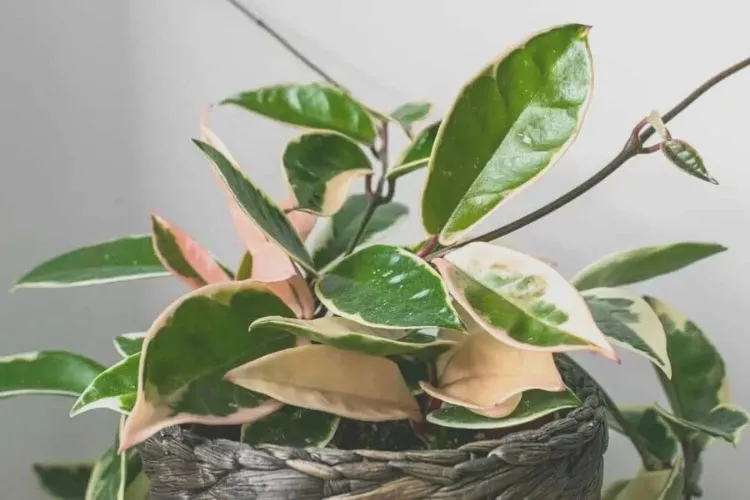
Flowering
If you choose to use flowering as your point of difference between the Queen and Princess, you will struggle. The color and shape of plants and flowers are very similar. The differences are subtle but still noticeable if you know what to look for.
They both have the same star-shaped blooms, but the Krimson Princess has stunning pink flowers with a deep red colored center, and the Queen’s flowers are a straight pink.
Repotting
Both The Krimson Queen and Princess like to be repotted often. Depending on its growth, you may even wish to upsize their pot every 1-2 years. This should usually be done during late spring to early summer. Aim to choose a container at least 2-3 inches larger in diameter than the root ball.
The root ball spreads quickly and soaks in everything it can until it starts curling up around the inside edges of the growing container. The roots will even start growing out the top and bottom of the pot, which is a definite sign of an upsize.
Temperature
Both of these plants thrive best with growing temperatures between 60°F (16°C ) and 90°F (32°C). They do not fare too well in extreme heat or colds. The heat will dry them out and shrivel their leaves, causing major stress and an early end to their lives if left unattended.
Furthermore, when growing either of these species outdoors, aim to bring them inside when temperatures drop below 50°F (10°C). ‘
They are native to the Northern parts of Australia and South East Asia, so they are used to warmer, more humid climates. 50% humidity is tolerable but up to around 70% is optimal. They go dormant during the winter.
Low maintenance pruning
These plants require little to no pruning. The only cases in that you would do so are to control growth in an indoor setting. Most plants are pruned to regenerate growth, but the delicate nature of both these species’ stems and branches won’t allow too much growth, if any, via pruning.
Hoya Krimson Queen: A Detail Overview
The Hoya Krimson Queen is native to India, Thailand, and China, among other areas located in the SouthEast regions of Asia.
Their sprawling, upward climbing vines can grow to an impressive 5-7 ft (1.5 to 2 m) indoors.
When grown outdoors with extra light, they can grow to an even more extraordinary 25 ft (7.6 m).
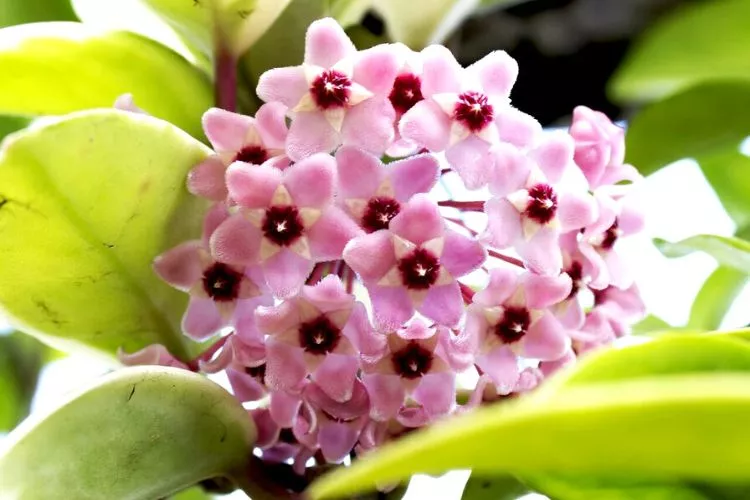
These plants grow thick, fleshy leaves that span 1.5-2 inches (4-5 cm). Their blooms are waxy in texture and shaped like stars which produce vibrant pink colors.
These flowers only start coming out when the plant matures at around 2-3 years of age. We will go through this plant and compare it with the Krimson Princess in full detail further into the article.
Hoya Krimson Princess: A detailed Overview
The Hoya Krimson Princess is native to Australia and the Eastern Asian regions such as China, Vietnam, and Japan.
It can create sprawl upwards to 3-4 ft (90-120 cm) when growing indoors and a whopping 15-18 ft (4.6-5.5 m) outdoors.
The extra light influences the height difference that this plant can be exposed to.
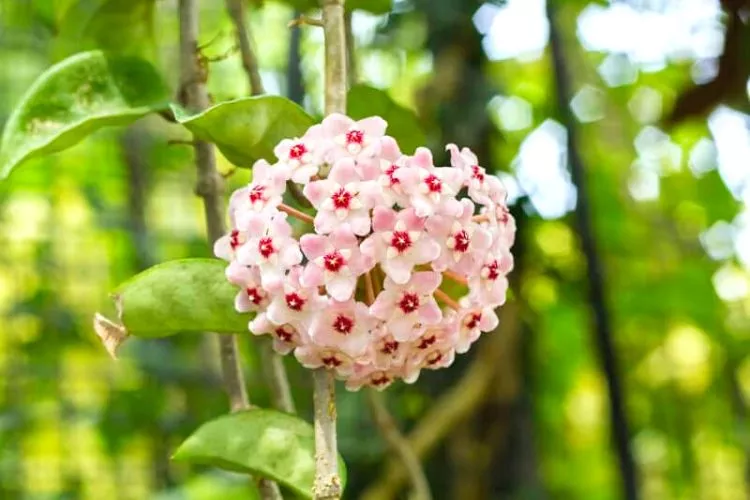
The Krimson princess leaves are green and waxy and can grow to around 1-1.5 inches (3-4 cm) in length. The flowers are their most distinguishable asset with their waxy pink, star shaped outer edges and striking red center.
As beautiful as the blooms are, growers must wait around 4 years for the plant to mature and enjoy them. In the next section, we will go through this plant and compare it with the Krimson Queen.
Hoya Krimson Queen Vs Princess: What’s the Difference?
To make things a little easier and set the record straight, here’s a bit of word association to help distinguish between the 2 species.
“The Queen wears her white as a crown (with white leaf edges, similar to a silver crown), and the Princess wears her white as a gown, (white in the middle, edges or margins are green).”
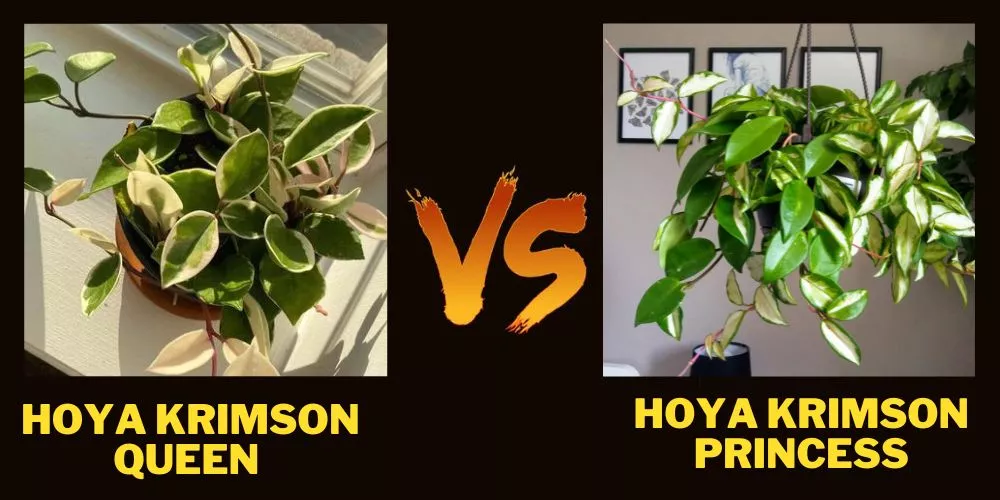
Aside from the subtle differences, there are many more technical aspects to help understand both of the plants a little better. These characteristics may seem repetitive, so read all the information to help spot the difference. It’s best to have this knowledge in a table to compare the 2. So here we go…
| Krimson Queen | Krimson Princess | |
| Scientific name | Hoya Carnosa – Krimson Queen | Hoya Carnosa – Krimson Princess |
| Native Region | South East Asia/Australia | South East Asia/Australia |
| Dimensions | Height – 5-7 ft (1.5 to 2 m) indoorsHeight – 25 ft (7.6 m) outdoors | Height – 3-4 ft (90-120 cm)IndoorsHeight – 15-18 ft (4.6-5.5 m)outdoors |
| Taxonomy | Apocynaceae/ Dogbane familyA.k.a Wax Plant, Porcelain Flower, Shooting Star | Apocynaceae/ Dogbane familyA.k.a Wax Plant, Porcelain Flower, Shooting Star |
| Growth Rate | 2-3 year maturity | 4 year maturity |
| Leaf characteristics | Green inside with white edges, Cordate/oval shaped 1.5-2 inches (4-5 cm) long | White inside with green edges, Cordate/oval shaped1-1.5 inches (3-4 cm) long |
| Flower characteristics | Small, star shaped, waxy pink flowers | Small, star shaped, waxy pink flowers with striking red center |
| Growing difficulty | Easy/Beginner | Easy/Beginner |
| Soil Preference | Well aerated and draining, orchid potting mix | Well aerated and draining, orchid potting mix |
| Sun Exposure/Light Requirements | Bright, indirect (minimum 7 hours per day) | Bright, indirect (minimum 7 hours per day) |
| Watering | Light, allow the top 2-3 inches to completely dry out before continuing to water | Light, allow the top 2-3 inches to completely dry out before continuing to water |
| Climate/Temperature | Jungle environmentHigh humidity (70%)Between 60-90°F (16-32°C)Chill damage under 50°F (10°C) | Jungle environmentHigh humidity (70%)Between 60-90°F (16-32°C)Chill damage under 50°F (10°C) |
| Fertilization | Light feeder, Spring/Summer (once per month with water-soluble, potassium and phosphorus mix | Light feeder, Spring/Summer (once per month with water-soluble, potassium and phosphorus mix |
| Tolerance | Not tolerant to drought, extreme chills | Slightly more tolerant to drought than the Krimson Queen, dislikes extreme chills |
| Growth Zone | USDA 9-10 zones hardy | USDA 10-11 zones hardy |
| Pests | Mealybugs, Aphids, Spider Mites | Mealybugs, Spider Mites, and Scale |
| Diseases | Botrytis Blight, Phytopthora Blight and Powdery Mildew | Botrytis Blight, Phytopthora Blight and Powdery Mildew |
Common Problems of Hoyas
The most common problems when growing these plants are overwatering, drying out, and freezing. Overwatering is ranked at the top as it causes knock on effects such as root rot and pest infestation.
Small intruders, including Mealybugs, Spider Mites, and Scale, love feeding on a rotting Krimson. Early signs include Leaf-drop, yellowing, blackening of leaves, and dieback of stems.
On the other hand, drying out and freezing are much more manageable if they begin to take hold. If the plant becomes too dry, use the submerging method mentioned further in this article.
When a Hoya is subject to extreme colds, bring the plant indoors.
Hoya Plant Uses
The Hoya species of plant aren’t just a pretty face; let’s look at what else the Krimson Queen and Krimson Princess can be used for.
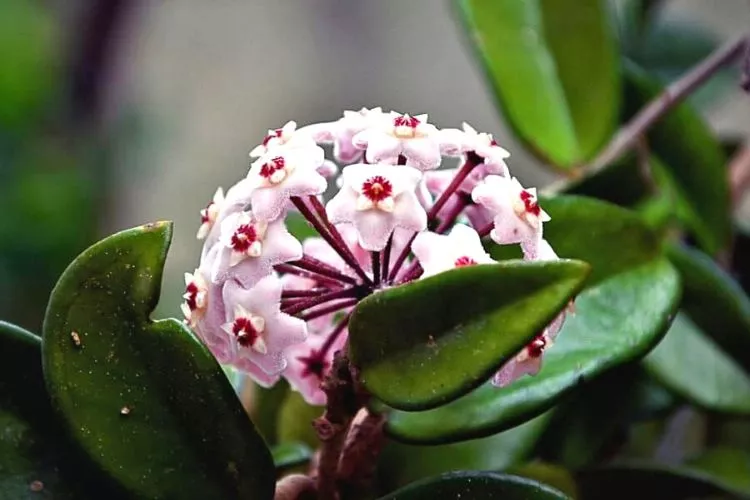
What is the Hoya Krimson queen used for?
The Krimson Queen is most notably used as a low maintenance houseplant for an entry level grower. They’re best suited to homes in moderate temperate regions. These plants are super easy to propagate from cuttings and don’t require constant repotting.
They add that extra tropical zest to even the dullest of homes. This Hoya variant is nontoxic and even helps remove toxins from the air and purify it. The lush, waxy foliage and strong aromatic vanilla smelling flowers can help produce powders, perfumes, lotions, and other beauty products.
What is the Hoya Krimson Princess used for?
The Krimson Princess shares almost all the same qualities as the Krimson Queen. The only difference is that its striking red flower centers can produce that specific color in the previously mentioned beauty products, including powders, lotions, etc.
Furthermore, the scent of the Krimson Princess is more of a chocolate aroma than that of the Queens, which has a vanilla hint.
Hoya Krimson queen vs Princess: Which Is Better?
Suppose we were to compare the 2 species and decide on a winner. We would most likely swing toward the Krimson Princess. There is almost no difference, but those cute red centers make the flowers pop.
Not only that, but we are big fans of chocolate over vanilla, so the scent is like the cherry on top! Amusingly though, the blooms won’t appear for a few years after planting.
So growing them restricts you from enjoying the flower aspect and just soaks in the green, waxy leaves and plants itself.
Frequently Asked Questions (FAQs)
How to take care of Hoya Krimson Queen?
Hoya Krimson Queens are best grown indoors to minimize the risk of any elemental damage. Place them in a bright area with at least 7 hours of indirect sunlight. Lightly water only when the soil is completely dry. Make sure to pot them in an orchid friendly mix with adequate aeration and drainage. The pot should always be 2-3 inches larger than the root ball to allow the roots freedom to sprawl. Enjoy!
How do I get more pink leaves on Hoya Krimson Queen?
Allowing your plant access to adequate sunlight will help to improve the bloom rate and coloring. Remember that they should be placed under indirect sunlight to avoid scorching the foliage.
Do hoyas prefer to hang or climb?
Hoyas prefer to climb. They are quite a joy to watch as they latch onto a trellis and work their way up over time. They are easy to train and grow on concrete or brick walls.
Conclusion:
So as we can see, Hoya Krimson Queens and Hoya Krimson Princess’ are almost identical. Thankfully, the leaf inversion can help to identify which is which. Otherwise, it’s a long wait until the different colored blooms can be used. We hope this article was helpful and insightful, and we look forward to seeing you next.


